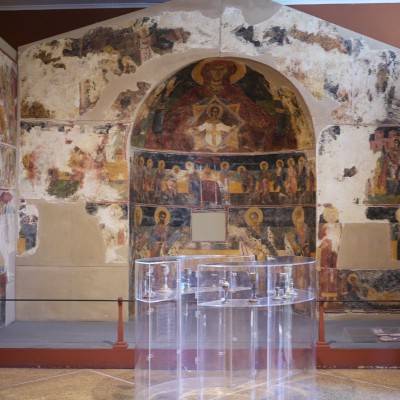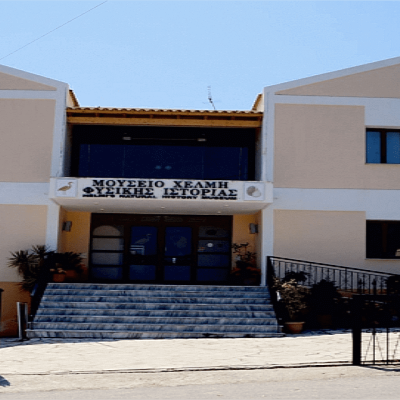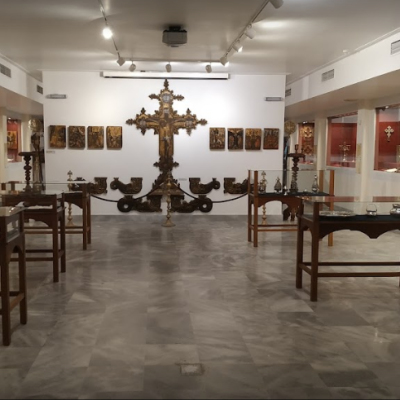The total destruction of August 1953 of the city of Zakynthos by the earthquake erased the beauty that came to life from the architecture of many churches and mansions. Its culture, strengthened by a strong folk element, flourished in all forms of Art and today we can get to know it better through its Museums, which preserve the remnants of the glorious past and illuminate the personalities who worked for it.
The Museum of Solomos & Eminent Zakynthians, located in the historical square of Agios Markos, includes on the ground floor the only Mausoleum in Greece with the graves of the two poets, Dionysios Solomos & Andreas Kalvos, while on the floor with the evidence it is presented the work of the Zakynthians, who stood out for their important role to the literature, culture, the sciences, the arts and the political struggles.
In the other large square of the city, Solomos Square, is the Museum of Zakynthos, which as a valuable depositor of important works of post-Byzantine art, includes the hagiographies, the wood-carved temples and the silver-carved candles, which survived through the remnants of dozens of ruined churches in August 1953. A special exhibit is the model of the before the earthquake Zakynthos, by Giannis Manesis, which on a scale of 1:500, presents the neighborhoods of the city in the period 1930-1950.
In the same square is the Public Historical Library of Zakynthos, with a long history, (year of foundation 1803), which was reconstructed after the earthquake by donations and bequests and includes 85,000 volumes of books, a local press archive, unpublished archives, old magazines, old newspapers, a collection of dolls in local costumes, a collection of paintings, a collection of photos of the pre-seismic (1953) Zakynthos and old furniture.
The Roma Mansion-Museum, next to the historic church of the Lady of the Angels, was fortunate not to be burned by the great fire that followed the earthquakes in 1953, and so it was restored, almost completely, to its pre-earthquake form. Its interior layout reflects the needs, mentality and more generally the lifestyle of the old aristocratic class of the island, such as the large reception areas, the library (more than 10,000 titles), the collection of family portraits, paintings, uniforms and weapons of family members and other historical objects.
On the other side of the city, near the other important church, Faneromeni, is the Municipal Museum of Grigorios Xenopoulos, built on the site which was the home of the great writer and playwright. It contains his personal belongings, manuscripts, publications of his works, issues of the magazine "The Education of Children", various books, brochures, printed matter and photographic material. Also, his exhibits include objects, furniture, and utensils from the Xenopoulou family house, as well as rich archival material related to the author's daughter, Efthalia Xenopoulou.
In the position where the house of the poet Ugo Foskolos, on Foskolou & Kyriakos Xenos Street, was preliminarily erected a Museum, the care of which has been taken by the Cultural Association of Zakynthos (P.S.Z.) "Ugo Foskolos", founded in 2009, with the statutory purposes of the construction of the poet's historic house, the re-foundation of the Foskolian library and the creation of a museum in Zakynthos.
Behind the church of Agios Dionysios is the Ecclesiastical Museum of the Monastery of Agios Dionysios, which includes sacred vessels, vestments, icons, manuscripts, ecclesiastical books, most of them from the Monastery of Strofades. The largest number of icons of the Museum belongs to Cretan painters, who worked in Crete or Zakynthos after the conquest of the major Cretan cities by the Turks, while a significant number of works belong to local painters of Zakynthos.
In the countryside of the island one can visit Museums that cover all the interests of the numerous visitors of the island: folklore, historical, nautical, eco-museum and natural history.
Specifically, the Vertzagio Folklore Museum, located in the village of Pigadakia, reconstructs in great detail a traditional Zakynthian house, with the furniture and objects of the pre-earthquake era. The rooms of the house: the bedroom, the living room, the kitchen and the dining room are represented, just as they were, with all the utensils and tools for cooking, grinding and daily tasks, inside and outside of the house.
In the Milanese Navy Museum, located in the seaside resort of Tsilivi, it includes watercolors, relics of famous ships and photographic material, depicting the evolution of the maritime history of the Greek nation, through uniforms, swords, medals, compasses, shields, etc., documenting in its exhibits 4,000 years of maritime Greek history.
The Historical War Museum was founded in 2018 and is located at the Galaxy Beach Resort, in Laganas. It is an official annex to the "Historical - National Museum of Anastasios Liaskos", founded in 1995, in Kontodespoti of the Municipality of Messapia in Evia. It includes three-dimensional war scenes with accurate representations of battles from the Korean War and the Vietnam War, while figures in natural size, uniforms, war equipment and vehicles of the time bring to life the modern history.
In Agia Marina (Fayia) is located the unique Museum Helmi of Natural History, whose collections include flora and fauna of Zakynthian nature, as well as ecosystems and animals from all over the world. Also fossils, 3000 marine organisms, rocks, while in the entomology room are exhibited 2,500 species of butterflies and moths and in the ornithology room 850 species of birds from all over the world.
The Caretta caretta Sea Turtle Thematic Exhibition Centre is located in the area of Daphne, which is part of a Landscape Protection Area Φ1, of the Zakynthos National Marine Park, in the municipal district of Vassilikos. The designed space of the Topic Centre, the exhibition and informative material, the use of multimedia and the commemorative objects given, constitute for the visitor an opportunity to be informed and raise awareness about the sea turtle and its nesting beaches in Zakynthos.
In conclusion, the visit to the island of Zakynthos is not one-dimensional. Apart from the wonderful beaches and the sea, one can enjoy unique museums, which preserve and promote the Ionian civilization, in all its manifestations of the Art of Nature and Life.
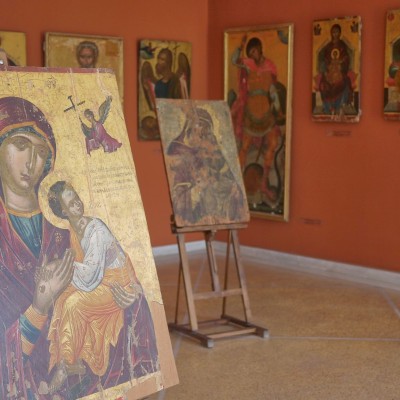

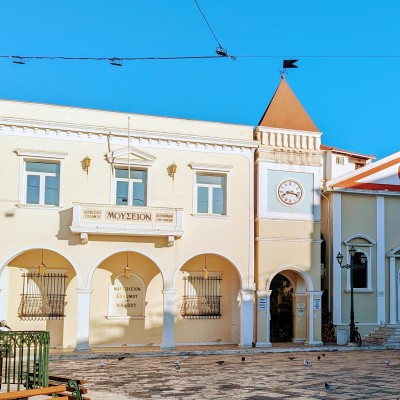
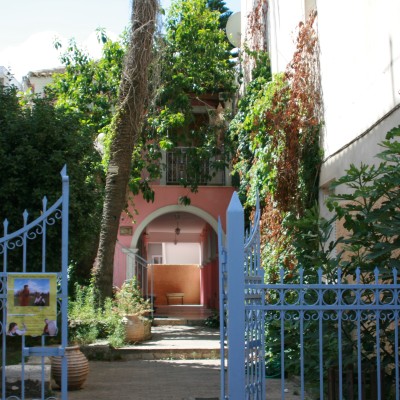
.jpg)
